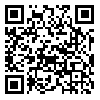Volume 19, Issue 21 (9-2021)
RSMT 2021, 19(21): 95-104 |
Back to browse issues page
Download citation:
BibTeX | RIS | EndNote | Medlars | ProCite | Reference Manager | RefWorks
Send citation to:



BibTeX | RIS | EndNote | Medlars | ProCite | Reference Manager | RefWorks
Send citation to:
hatefi M, balochi R, babakhani F. Electromyography analysis of selected lower extremity muscles in the squat with Different hip rotations. RSMT 2021; 19 (21) :95-104
URL: http://jsmt.khu.ac.ir/article-1-420-en.html
URL: http://jsmt.khu.ac.ir/article-1-420-en.html
Kharazmi University , hatefimohamadreza@yahoo.com
Abstract: (5036 Views)
The purpose of this study was to investigate the effect of different hip joint postures on electromyographic activity of selected lower limb muscles during squat's movement. Electromyographic activity of selected lower limb muscles of 15 healthy male students was recorded while performing a squat with neutral, 15°, 30°, 45° external and internal rotation of the hip. Friedman's nonparametric test was used to compare muscle activation at different angles of the hip rotation and the Wilcoxon test was used to determine within-group differences. The results of this study showed no significant difference in the activity of Vastus medialis (p = 0.052), Vastus lateralis (p = 0.102) and tensor fasciae lata (p = 0.193) in squat between different hip joint angles, but Significant differences were observed in gluteus medius muscle activation (p = 0.001) and biceps femoris (p = 0.015) in squat between different hip joint angles. Also, the results of this study showed that gluteus medius to tensor fascia lata activation ratio was significant in squat between different hip joint angles. squat with the external hip angles can be considered as an effective method to increase gluteus medius activation and gluteus medius to the tensor fasciae latae activation ratio. On the other hand, 45 ° external and 30 ° internal hip angles can be considered as an effective method to increase the biceps femoris activation.
Type of Study: Research |
Received: 2020/05/16 | Accepted: 2019/11/1 | Published: 2021/09/20
Received: 2020/05/16 | Accepted: 2019/11/1 | Published: 2021/09/20
Send email to the article author
| Rights and permissions | |
 |
This work is licensed under a Creative Commons Attribution-NonCommercial 4.0 International License. |







